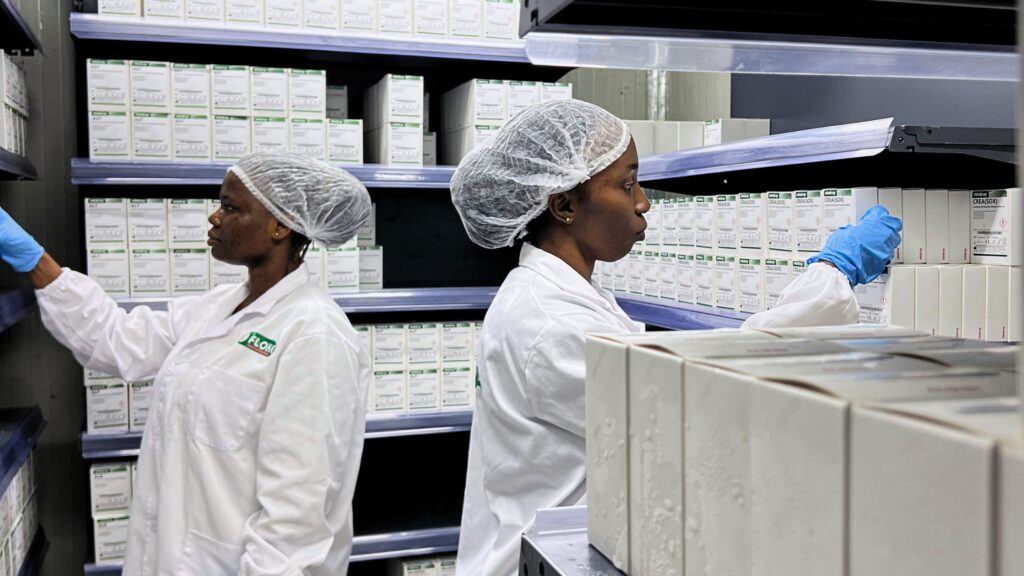The Forgotten Stage of Quality: Cold Room Storage of Laboratory Reagents

When most people think of quality control and assurance (QC/QA) in healthcare, they envision laboratory benches, diagnostic devices, and scientists doing controls to validate their findings. However, quality begins long before a pipette touches a reagent.
The path of a laboratory reagent begins with the manufacturer, but an often-overlooked stage is the cool room, where reagents are stored before being delivered to hospitals and end users. What happens in this storage area can decide whether a reagent functions as planned or quietly jeopardizes patient care.
Why Cold Room Storage Matters
Many laboratory reagents are extremely sensitive to environmental conditions. Enzyme-based kits, PCR reagents, ELISA panels, RDTs, calibrators, and controls can all become unstable when subjected to mild temperature variations.
A reagent stored at 2-8°C in a cold environment is stable and ready to use. However, if that same reagent spends a few hours above the optimum temperature owing to a power outage or negligent handling, its integrity may have already been compromised, even if it appears to be intact.
When the reagents arrive to a hospital, the lab may unknowingly struggle with uneven quality control results or poor patient outcomes, unaware that the problem began earlier in storage.
Overlooked Risks in Cold Room Storage
Cold rooms are designed to safeguard quality, yet several risks are often ignored:
- Temperature Fluctuations: Even a 2°C deviation can reduce reagent potency.
- Uneven Temperature Distribution: Poor arrangement or blocked airflow can create hot spots.
- Overstocking: Crowded shelves restrict circulation, undermining cold room efficiency.
- Power Outages: Without backup systems, even short interruptions can cause irreversible damage.
- Poor Documentation: Temperature logs filled in after the fact mask the reality of excursions.
- Humidity Issues: Condensation can damage packaging, smudge labels, and affect reagent stability.
Each of these issues represents a silent risk to patient safety hidden until test results fail downstream.
Quality Practices That Safeguard Reagents
To preserve integrity, cold room management must be considered as a key QC/QA job, rather than a storage chore.. Key practices include:
- Continuous Monitoring: Use data loggers and alarms instead of relying solely on manual checks.
- Calibration: Ensure thermometers and sensors are regularly calibrated.
- Lot Segregation: Keep different batches separate to make recalls and tracking easier.
- First-Expiry-First-Out (FEFO): Prevent waste and ensure older stock is used first.
- Pre-Supply QC Verification: Test random samples before distribution to confirm reagent reliability.
- Cold Chain Continuity: Equip transport with validated coolers and temperature loggers.
These steps may sound simple, but they form the backbone of trust between suppliers and the healthcare system.
The Hidden Cost of Poor Storage
When cold room QC is neglected, the ripple effect is significant:
- Labs waste valuable time troubleshooting failed QC runs.
- Clinicians lose trust in test results.
- Patients may receive delayed or incorrect treatment.
- Suppliers damage their credibility and risk losing clients.
All of this could have been prevented by robust quality practices in the cold room.
Building a Culture of Quality
Cold room staff are frequently referred to as “warehouse workers,” but in actuality, they are the keepers of diagnostic accuracy. Their work affects whether hospitals acquire reagents that will produce reliable results.
This requires:
- Training staff to understand their role in the broader QC/QA system.
- Encouraging honesty in reporting temperature excursions.
- Adopting digital tools for real-time monitoring and alerts.
When the cold room is managed with the same rigor as the laboratory, the entire diagnostic chain becomes stronger.